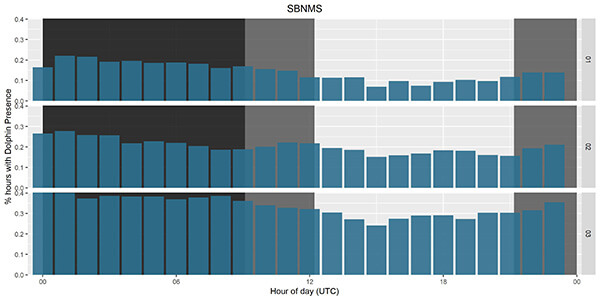Understanding Year-Round Whale Presence by Listening Closely
By Anne Smrcina
February 2022
In cold winter months with New England’s whale watching fleet safely stored away or relocated to southern harbors, one might assume the animals that support the industry have also departed these frigid waters. However, recent studies show that whales visit Stellwagen Bank National Marine Sanctuary throughout the year.
Stellwagen Bank serves as the primary destination for most of Massachusetts’ whale watching vessels during the April-October season. Humpback, fin, minke, and occasionally sei whales feast on schools of sand lance (a small forage fish), krill, and other prey. Dolphins and harbor porpoises also cruise through sanctuary waters, with dolphins occasionally providing escorts as they ride the bow wakes of passing ships. North Atlantic right whales skim feed patches of copepods and other zooplankton in the spring and fall. Visual observations of the varied species from the whale watch fleet provide important data for cetacean researchers during whale watching season, but these contributions fall off in the winter (November-March). Acoustic monitoring technology fills this “black hole” of whale data by recording the calls (and presence) of visiting marine mammals year-round.
“Being able to see whales is not the only way to know who’s there,” notes Dr. Leila Hatch, national coordinator for the Sanctuary Soundscape Monitoring Project (SanctSound). SanctSound is focused on determining sound levels and baseline acoustic conditions in seven sanctuaries and one marine national monument around the nation. In November 2018, Stellwagen Bank National Marine Sanctuary and National Marine Fisheries Service scientists deployed three acoustic recorders (SoundTrap 300s) at different locations in the sanctuary. Data has been collected continuously throughout this multi-year project, which will conclude in spring 2022.
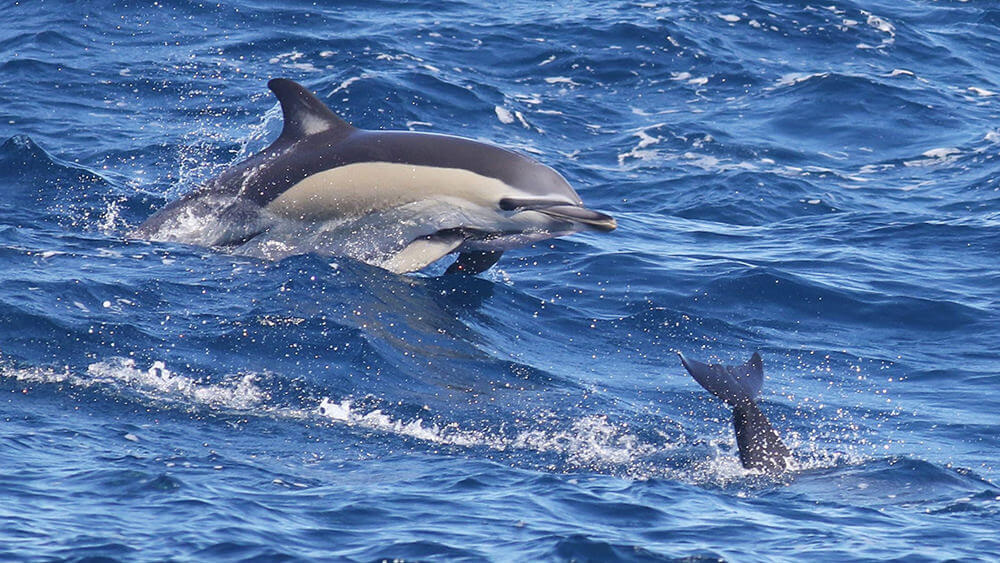
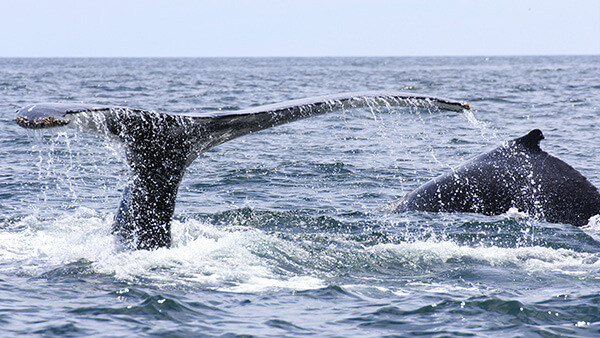
The sounds recorded by the units were compared to a pre-programmed call library of vocalizations identified to local baleen species—North Atlantic right whales, sei, fin, humpback, and blue whales. For common dolphins, Atlantic white-sided dolphins, and pilot whales, the system cannot yet identify species-specific whistles (typical vocalizations), so they were grouped together as delphinids.
“Using passive acoustic monitoring provides a snapshot of the usage of the sanctuary by baleen whales and dolphins, exemplifying the species richness of this northern East Coast sanctuary,” said Annamaria DeAngelis, of the Northeast Fisheries Science Center, an acoustician working for this project.
What and When: Questions Answered
Stellwagen Bank National Marine Sanctuary, among all the East Coast sanctuaries, hosts the largest number of baleen whales and dolphins in terms of daily activity and number of calls detected by acoustic receivers. The data indicated that North Atlantic right whales visited primarily from February to May while humpback whales were present throughout the year with slight decreases in late summer and late winter. Sei whales came to these waters from mid-February to mid-June, while fin whales were detected year-round but with fewer numbers in summer months. Occasional blue whales were heard in the early fall. Dolphins were present throughout the year with highest detections in spring and a secondary peak in December.
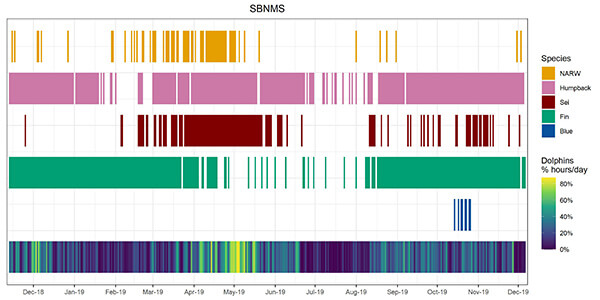
“We were surprised by the number of vocalizations by dolphins during the year-long dataset,” noted Dr. Sofie Van Parijs, project scientist from the Northeast Fisheries Science Center. “We don’t get many opportunities to view these animals in the winter.” The evidence of year-round dolphin presence led to further investigation, which showed that more detections were made at the southernmost buoy anchored on Stellwagen Bank than at the two other buoys located in deeper areas west and north of the bank. The data also indicated that dolphins are actively communicating throughout the day and night.
Why Study Whale Presence?
The baleen whales that feed in the sanctuary are all protected under the Marine Mammal Protection Act and most (North Atlantic right, fin, sei, and blue) are listed as endangered under the Endangered Species Act, with the right whale holding a critically endangered status. Knowing when and where these animals are located can help in developing better conservation strategies. This work fills in knowledge gaps about dolphins in the region, which will be fine-tuned to the species level in the future.
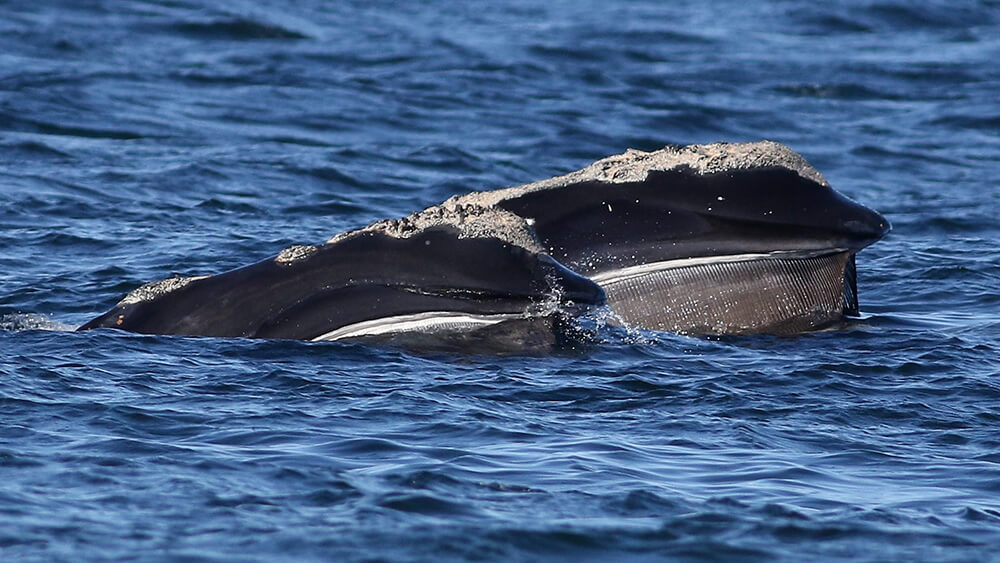
Acoustic studies allow researchers to continue making observations in the wintertime when it’s hard to be out on the water. Bimonthly trips to swap out and service equipment allow weeks of data to be downloaded in the laboratory. These new techniques provide a system that can identify animals that are often hard to see from the surface and provide a much wider field of “view” using sounds that can reach the receivers from any direction.
Whale watching for the cetacean research community now continues year-round with a new emphasis on whale listening.
Anne Smrcina is the education coordinator at Stellwagen Bank National Marine Sanctuary


